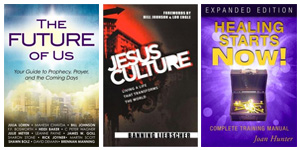We are more literate, more filled with data, than at any time in the history of the Church. We have more books or ebooks, more teaching, webinars, powerful conferences; yet our hearts, our families, and indeed the world around us remain unchanged. There must be a further transformation, a greater becoming of who we are in Christ. The account of the resurrection of Lazarus in the Gospel of John as an analogy of this restored life through this pattern is found many places in the Scriptures. The restored life is a journey from quieting, to listening, to restoring and becoming.
Quieting
The restoration of Lazarus began in the quiet darkness of the tomb. New life often begins in the dark: the darkness of creation, the darkness of the womb. The process that restored life to every cell of Lazarus begins in the stillness or quiet. We have noisy hearts. Quieting allows us to be intensely present and aware of Christ until we hear the beating of his heart within us. Jesus often sought the solitude and quiet of the mountain or the wilderness where he might separate Himself from the noise and demands of daily living to the heart of the Father. These times often preceded or followed great signs and wonders.
Until we are quiet, we cannot hear the heart of God. The Psalmist says, “Be still and know that I am God” (PS 46:10). God speaks to Elijah in the “sound of a gentle stilling” (1 Kings 19:12). Hearing God begins in the quietness of separation where our hearts connect with His and where we become empty of noise to be filled with His unconfused Voice. Quieting is about focus until we can hear the sound of the heart of Jesus beating within us.
Listening
When the stone was rolled away and the obstacle to hearing the voice of Christ was removed, Jesus shouted loudly to his friend, “Lazarus, come forth.” As we set our hearts to listen, the voice of God breaks into the silence connecting us with the Voice. And the Voice speaks something simple to us. “You are loved—you are Mine!” In the story of Lazarus, Jesus calls forth his beloved friend by name, saying, “Lazarus, come forth!” (11:34). Lazarus is referred to as “beloved” several times in the Gospel of John (11:3, 5, 36). As we listen, we hear the Voice calling us to know that we are the beloved of God.
We are the beloved of God as Jesus was the beloved of the Father. We overhear conversations from Father to Son twice in the gospels: once when Jesus is baptized, and the other time on the mount of transfiguration. Both times the Father says, “You are My Beloved Son.” (Luke 3:21-22, Mark 9:7). In quietness and listening, the followers of Christ experience truth and the conversion of heart. He must be unbound and released from the grave clothes, the remnants of death and the tomb. It is not enough for Lazarus or us to simply respond to the Voice only to shuffle to the mouth of the tomb. We are still bound.
Restoring
Restoration reflects the command of Jesus to the community around Lazarus to remove the grave clothes and remnants of death. (John 11:44). In this practice, the followers of Jesus experience his personal and interactive presence healing areas of past wounding and negative programming. This often involves the healing of memories. Henri J. M. Nouwen suggests that parts of us that have been wounded in the past and have caused emotional pain must be healed. “Your pain is deep, and it won’t just go away. It is also uniquely you, because it is linked to some of your earliest life experiences. Your call is to bring that pain home. As long as your wounded part remains foreign to your adult self, your pain will injure you as well as others.”
The source is often a childhood wounding experience that has implanted beliefs not reflective of the truth of God. The presence of God is acknowledged in the time of wounding. As the subject recognizes the presence of God, there the truth is received, healing begins,offenders are forgiven, vows are broken and spiritual strongholds are removed. We are unbound and the stink of death is off us.
Becoming
When Jesus commands the community of Lazarus to “let him go,” Lazarus is released to continue his journey toward Christ. This devotional analogy reflects growth in intimacy which leads to Christ-like character and peace. This transformation is also a process of establishing new beliefs, habits or, as Psalm 23 puts it, “paths of righteousness for his name’s sake.” Jesus tells us in John 8:31 that it is not enough to merely acquire truth, but that we must continue in truth in order for it to become personal to us. “So Jesus was saying to those Jews who had believed Him, ‘If you continue in My word, then you are truly disciples of Mine; and you will know the truth, and the truth will make you free’” (John 8:31-33 NASU).
We invite you to seek our Restored Life Encounter where we journey with Jesus through the entire healing pathway. We will learn to quiet our noisy clanking hearts so that we can listen to the heart of Christ that restores and refreshes us to become like Him.
Editor’s Note: You can find Thom Gardner’s books here: Relentless Love and Healing the Wounded Heart





